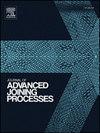Effect of tool diameter on the joint properties of AA6061 hollow panels using a novel one-step double-acting Friction Stir Weld method
IF 4
Q2 MATERIALS SCIENCE, MULTIDISCIPLINARY
引用次数: 0
Abstract
Hollow aluminum panels are designed to be both rigid and lightweight, making them ideal for structural applications where material efficiency is critical. However, reliable welding techniques are essential to join these panels effectively. A common challenge during welding is the formation of porosity defects, caused by the varying solubility of hydrogen gas as aluminum transitions between liquid and solid states. While solid-state welding methods like Friction Stir Welding (FSW) are effective in minimizing porosity, they present difficulties when applied to thick materials such as extrusion panels. Thick structures often require multiple welding passes, resulting in increased production time and higher costs. To address these challenges, this study investigates the potential of an innovative one-step double-acting FSW technique. This novel method uses two tools operating simultaneously, providing dual sources of frictional heat and compressive force, a concept unexplored in traditional FSW methods. The research focuses on the influence of shoulder diameter—a critical parameter—on the physical and mechanical properties of AA6061 hollow aluminum panels. Experiments were conducted using shoulder diameters of 20, 22, and 24 mm, with process parameters set at a transverse speed of 30 mm/min, a rotational speed of 1500 rpm, and a tilt angle of 2°. The findings demonstrate that increasing the shoulder diameter significantly enhances the mechanical performance of the welded joints. The specimen welded with a 24 mm shoulder diameter achieved the best results, with a hardness value of 71.73 HVN, a load capacity of 15.51 kN, and a bending strength of 4.7 MPa. These results underline the effectiveness of the one-step double-acting FSW technique in improving the quality and efficiency of welding hollow aluminum panels, offering a practical solution to the limitations of conventional FSW in thick-structured materials.
采用新型一步双作用搅拌摩擦焊方法研究了刀具直径对AA6061空心板接头性能的影响
中空铝板的设计既坚固又轻便,使其成为材料效率至关重要的结构应用的理想选择。然而,可靠的焊接技术对于有效地连接这些面板至关重要。焊接过程中一个常见的挑战是气孔缺陷的形成,这是由铝在液态和固态之间转变时氢气的溶解度变化引起的。虽然搅拌摩擦焊(FSW)等固态焊接方法可以有效地减少孔隙率,但在应用于挤压板等厚材料时却存在困难。较厚的结构通常需要多次焊接,从而增加了生产时间和更高的成本。为了应对这些挑战,本研究探讨了一种创新的一步双作用FSW技术的潜力。这种新方法使用两个工具同时工作,提供摩擦热和压缩力的双重来源,这是传统FSW方法中未探索的概念。重点研究了肩径这一关键参数对AA6061中空铝板物理力学性能的影响。实验采用肩径分别为20、22和24 mm,工艺参数设置为横向速度30 mm/min,转速1500 rpm,倾斜角2°。结果表明,增大焊肩直径可显著提高焊接接头的力学性能。焊接肩径为24 mm的试样硬度值为71.73 HVN,承载能力为15.51 kN,抗弯强度为4.7 MPa,效果最佳。这些结果强调了一步双作用FSW技术在提高空心铝板焊接质量和效率方面的有效性,为传统FSW在厚结构材料中的局限性提供了一个实用的解决方案。
本文章由计算机程序翻译,如有差异,请以英文原文为准。
求助全文
约1分钟内获得全文
求助全文

 求助内容:
求助内容: 应助结果提醒方式:
应助结果提醒方式:


